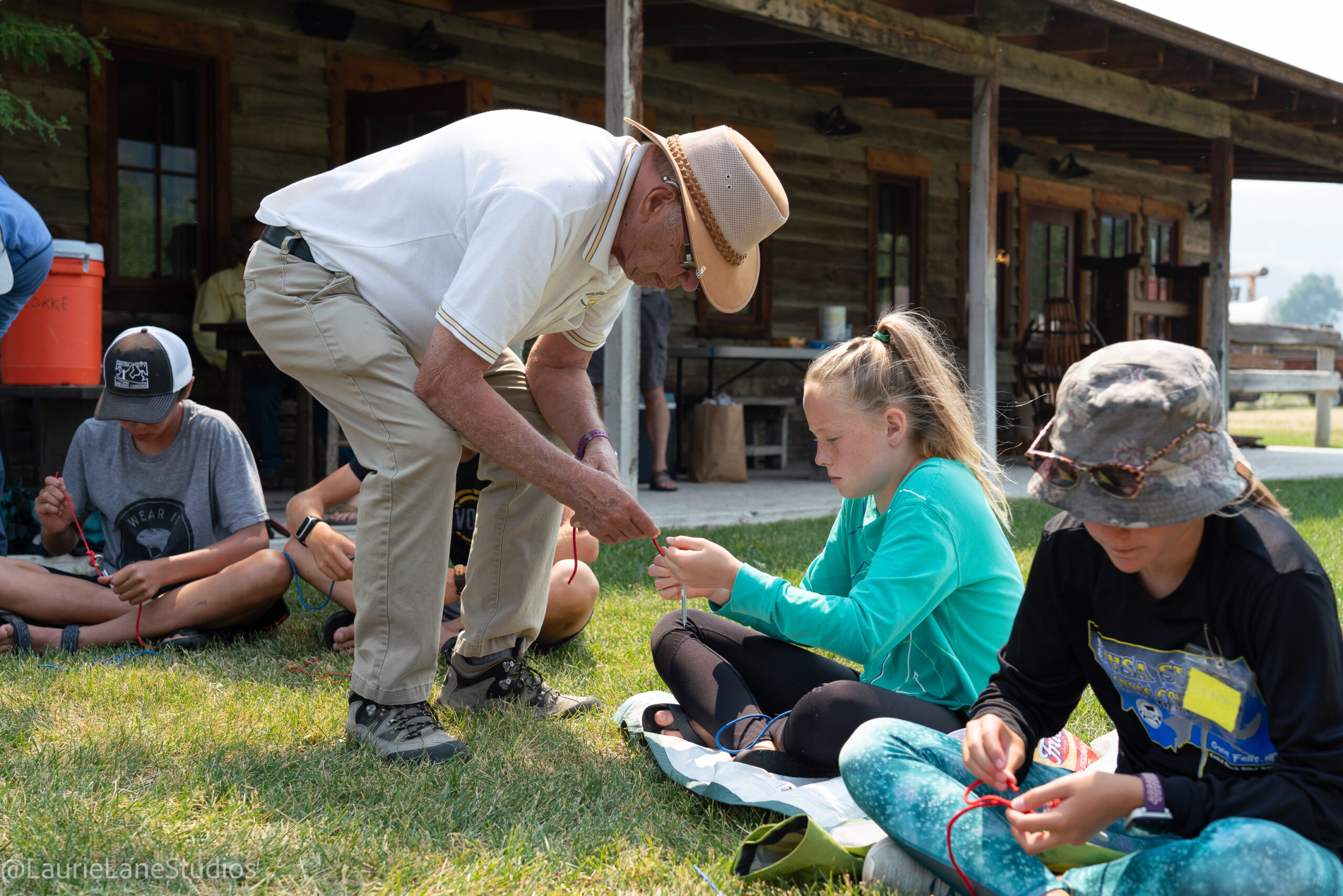
Youth Education – River Life Home Education Program
At Montana Trout Unlimited, we know how important the next generation of river stewards is to the future of conservation and sound angling ethics. That’s why for many years we’ve offered the Youth Fly Fishing and Conservation Camp each summer. We also know that with the reality of COVID-19, many people are home schooling their children and summer plans are uncertain for all of us. That’s why we created a crash-course for parents and kids in stream biology and ecology. Divided into 5 modules focused on different pieces of the river ecology mosaic, we’ve gathered lesson plans, fun handouts and activities you can download to do together, while creating fresh new video content to support your learning progress available on our YouTube page. Many of the materials here were developed by Margaret Sherriffs and Duncan Blair for TU’s Cold Water Conservation Education Guide (2002) and have been used at various youth camps for many years.
We also want you to share your experiences with us and other families. Tag us in your posts on Facebook and Instagram and use the hashtag #mturiverlife. We’ll send the best submissions some cool TU gear for sharing.
Check out our program below! We’ll update the lesson plan as we progress each week. New module will be posted each week, with a live broadcast most weekdays at 11am Mountain Time, with supporting content. Tune in to our Facebook and Instagram live and follow along with your family.
Lesson 1: Trout Anatomy
Learning Objectives:
- Identify Native and non-native trout species
- Explain trout life history and spawning migrations
- What is a redd?
- Describe mating behavior
- Importance of clean water and oxygen for eggs
Curriculum – Trout Bio Lesson 1 (parents/kids 12 and up download here)
- Identifying features of bull, cutthroat, rainbow, brown, brook trout, and mountain whitefish – Montana Field Guide
- Bull/brook/brown trout and whitefish – fall spawners
- Cutthroat and rainbow trout – spring spawners
- Redd – nest build by a female trout or salmon
- Trout mating video – WATCH HERE
- Trout anatomy video with Ladd Knotek, MT FWP
Activities
- Trout Anatomy – Fill In the Blank
- Trout Species – Color the trout
- Go fishing!
Lesson 2: Aquatic Food Web and Stream Biology
Learning Objectives:
- What do trout eat?
- What animals feed on trout?
- Connecting fly fishing with the food web
Curriculum – Stream Life Lesson 2 (parents/kids 12 and up download here)
- Macroinvertebrates – Three main orders, mayflies, stoneflies, and caddisflies
- Learning to match the hatch
- Identifying insects and assessing watershed health
Activities
- Stream Safari – Field Trip and Journal Exercise
- Connect the Critters Handout – Good for young and old
- Bioassessment Exercise – middle school and up
- Insect Life Cycles Handout
Lesson 3: Healthy Habitat
Learning Objectives:
Trout need the 4 Cs! Clean, Cold, Complex, and Connected Habitat
- Clean – Trout need clean water for healthy bodies and their eggs
- Cold – Trout rely on cold water because it’s high in oxygen
- Complex – Habitat works best when it’s diverse!
- Streamside vegetation is good for shading/bank stability/shelter
- Wood is good for shelter
- Side channels provide shelter and protection for smaller fish
- Connected – Fish need to be able to swim without roads or dams blocking their way
Curriculum and Resources
Activities
Lesson 4: Studying Fish
Learning Objectives:
How do fisheries managers and biologist study trout?
- How do we find out the numbers and kinds of trout in a particular stream?
- Sampling methods – electrofishing, hook-and-line, netting, trapping
- How do we track fish to learn where they live and how far they travel?
- “Floy” tagging, PIT tags, and radio telemetry
- How do we monitor trout populations before, during, and after a restoration project?
- Sampling over time
Curriculum and Resources
- Missoula Trout Tag Study Video 1
- Missoula Trout Tag Study Video 2
- Wild Trout: A Montana Fish Story – TU Film
- Montana Fish Wildlife and Parks – Trout Tagging Video
- Race Up Rock Creek – Trout Surgery Video
- Electrofishing a Small Stream Video
Activities
- Mark/Recapture Activity – How we count fish
- Place 100 rocks or beans in a bucket
- Mark 25 rocks with a marker and place them back in bucket
- Now pick 25 new rocks from the bucket and see how many are marked and unmarked
- Do several samples and average the number of marked vs. not marked rocks you get.
- Use this equation to see how close your “estimate” is to 100
- Estimated Population Size = (Number Marked x Total Picked in Second Round)/Number of Recaptures
- N = MC/R
Lesson 5: Restoring Habitat
Learning Objectives:
How do TU and restoration managers improve habitat for trout? Why are small projects important?
- Dam and culvert removal
- Culvert improvement
- Adding wood for cover – Large Woody Debris!
- Installing fish screens on ditches
- Fish ladder installation
- Stabilizing stream banks
- Adding meanders and rebuilding to stream sections
- Decommissioning and moving roads
Curriculum and Resources
- Free the Rattlesnake – Short Film
- Rising From the Ashes – Short Film
- Ninemile Creek Before Phase II Restoration- Short Film
- Ninemile Creek After Phase II Restoration – Short Film
Activities
- Visit a local restoration project or fish screen
- Water Cycle – Fill In and Handout
- Create A Watershed – Handout
- Sum of the Parts – Handout Exercise